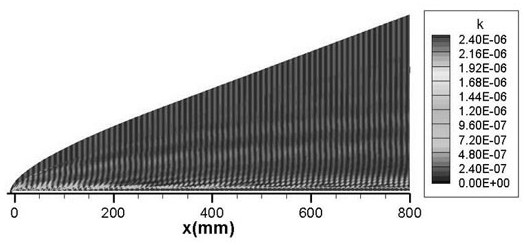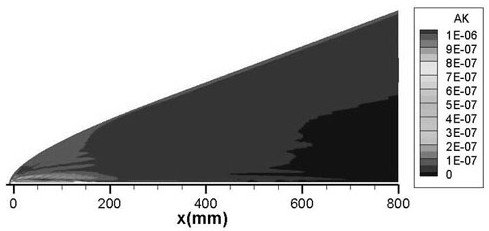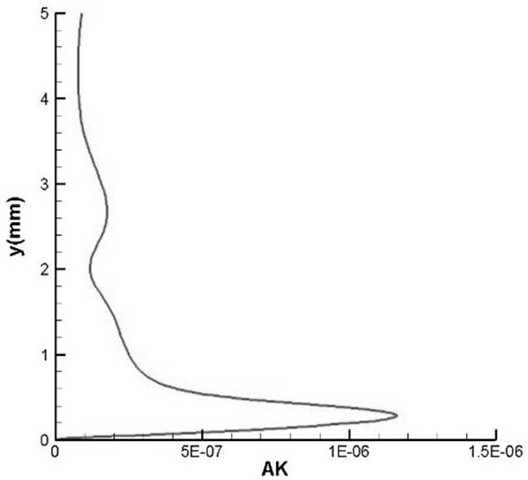A Boundary Setting Method for Turbulent Kinetic Energy Entrance of Flow Around a Hypersonic Blunt Front
A hypersonic, turbulent kinetic energy technology, applied in design optimization/simulation, computer-aided design, instruments, etc., can solve the problems of underestimating turbulent kinetic energy, inaccurate reflection, and large differences in calculation results, achieving high achievability, Reasonable and highly reliable results
- Summary
- Abstract
- Description
- Claims
- Application Information
AI Technical Summary
Problems solved by technology
Method used
Image
Examples
Embodiment Construction
[0051] All features disclosed in all embodiments in this specification, or steps in all implicitly disclosed methods or processes, except for mutually exclusive features and / or steps, can be combined and / or extended and replaced in any way.
[0052] Such as Figure 1~10 As shown, a hypersonic blunt front flow around the turbulent kinetic energy inlet boundary setting method, including the following steps:
[0053] S1, calculate the basic flow field, and obtain the steady basic flow field variables ;
[0054] S2, use the numerical simulation system to directly simulate the disturbance wave to obtain unsteady flow field variables ϕ ;
[0055] S3, analyze the flow field to get the disturbance field ϕ' , and obtain the turbulent kinetic energy distribution characteristics;
[0056] S4, set the turbulent kinetic energy inlet boundary;
[0057] S5, calculate turbulence / transition.
[0058] Further, in step S1, the calculation domain is established, the boundary conditions ...
PUM
 Login to View More
Login to View More Abstract
Description
Claims
Application Information
 Login to View More
Login to View More - R&D
- Intellectual Property
- Life Sciences
- Materials
- Tech Scout
- Unparalleled Data Quality
- Higher Quality Content
- 60% Fewer Hallucinations
Browse by: Latest US Patents, China's latest patents, Technical Efficacy Thesaurus, Application Domain, Technology Topic, Popular Technical Reports.
© 2025 PatSnap. All rights reserved.Legal|Privacy policy|Modern Slavery Act Transparency Statement|Sitemap|About US| Contact US: help@patsnap.com



